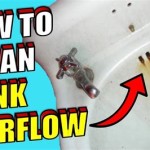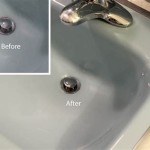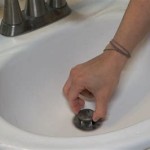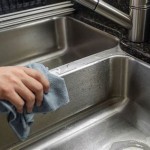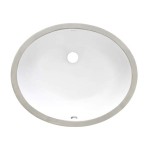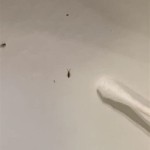```html
Understanding Water Source Connections for Dishwashers: Can Sink Water Enter the Appliance?
The connection between a kitchen sink and a dishwasher, specifically regarding water sources, is a common point of inquiry for homeowners. The assumption that water from the sink can directly enter the dishwasher is generally incorrect under normal operating conditions. Dishwashers are designed to draw potable water from a dedicated supply line, typically a hot water line, ensuring the appliance operates with clean water suitable for washing dishes.
The primary reason water from the sink is not intended to enter the dishwasher lies in plumbing code requirements and the need to prevent backflow and contamination. Backflow describes the undesirable reversal of water flow within a plumbing system. If sink water, potentially laden with food particles, grease, and cleaning agents, were to enter the dishwasher, it would contaminate the appliance's internal components, including the wash arms, filters, and water lines. It could then potentially contaminate the clean water supply.
To prevent backflow, plumbing codes mandate the installation of an air gap or a backflow preventer. These devices ensure that water flows in only one direction – from the potable water supply into the dishwasher. The air gap is a physical separation between the dishwasher drain hose and the sink drain, while a backflow preventer is a mechanical device that closes if water attempts to flow in the reverse direction. These safeguards are crucial for maintaining water quality and preventing unsanitary conditions.
The dishwasher operates on a closed-loop system internally. It pulls water from its dedicated supply line, heats it to the appropriate temperature, and then uses it to wash the dishes. After the wash cycle is complete, the dirty water is pumped out through the drain hose and into the sink drain. The entire process is designed to isolate the dishwasher's internal water supply from the potentially contaminated water in the sink drain.
Instances where sink water might appear to enter the dishwasher are typically related to drain line issues. For example, a clogged sink drain can cause water to back up into the dishwasher drain hose. This doesn't mean the sink water is directly entering the dishwasher's internal water system; instead, it indicates a drainage problem that needs to be addressed promptly. A high loop in the drain hose, properly positioned above the drain connection, can help mitigate this issue.
The Role of the Air Gap and Backflow Prevention
The air gap and backflow preventer are vital components for ensuring water safety in the kitchen. The air gap is the simpler of the two, requiring no moving parts. It consists of a small, vented fixture installed on the sink countertop, usually near the faucet. The dishwasher drain hose is connected to the air gap fixture, and a separate hose runs from the air gap to the sink drain. The physical gap between the two hoses prevents backflow because water must travel upwards and through the air gap before it can enter the drain.
A backflow preventer, on the other hand, is a mechanical device that uses valves and springs to prevent the reverse flow of water. These devices are more complex than air gaps and are typically used in situations where an air gap is not feasible or where a higher level of backflow protection is required. There are various types of backflow preventers, including reduced pressure zone (RPZ) valves and double check valve assemblies. The specific type required depends on the potential hazards and the local plumbing codes.
Both air gaps and backflow preventers are designed to prevent potentially contaminated water from entering the potable water supply. This protection is essential for maintaining public health and preventing waterborne illnesses. Regular inspection and maintenance of these devices are recommended to ensure they are functioning correctly.
Understanding Dishwasher Water Supply Connections
Dishwashers are typically connected to a hot water supply line. The rationale for using hot water is that it is more effective at removing grease and food particles from dishes. The hot water also aids in the sanitization process, killing bacteria and ensuring the dishes are clean and safe for use. The hot water line is usually connected to the dishwasher via a shut-off valve, allowing the water supply to be turned off for maintenance or repairs.
The dishwasher's water inlet valve controls the flow of water into the appliance. This valve is typically an electrically operated solenoid valve that opens when the dishwasher's control panel signals it to fill. The water then flows through the inlet valve and into the dishwasher's internal water distribution system. This system directs water to the wash arms, which spray the dishes with pressurized water.
The water level in the dishwasher is controlled by a float switch or a pressure sensor. These devices monitor the water level and signal the inlet valve to close when the appropriate water level is reached. This prevents the dishwasher from overfilling and potentially causing a flood. The precise mechanism for controlling the water level varies depending on the dishwasher model, but the basic principle remains the same.
The temperature of the water is also regulated by the dishwasher. A thermostat or temperature sensor monitors the water temperature and signals the heating element to turn on or off as needed. This ensures that the water is heated to the appropriate temperature for washing and sanitizing the dishes. Some dishwashers also have a booster heater that is used to raise the water temperature even higher during the sanitization cycle.
Troubleshooting Potential Drainage Issues and Backflow
If water from the sink drain is backing up into the dishwasher, several potential issues could be the cause. The most common problem is a clogged sink drain. Food particles, grease, and other debris can accumulate in the drainpipe, restricting the flow of water and causing it to back up. Clearing the drain using a plunger, drain snake, or chemical drain cleaner can often resolve this issue.
Another potential problem is a clogged dishwasher drain hose. The drain hose can become clogged with food particles and grease, preventing the dishwasher from draining properly. Inspecting the drain hose for kinks or obstructions is essential. Disconnecting the drain hose and flushing it out with water can often clear any blockages.
A malfunctioning dishwasher drain pump can also cause drainage problems. The drain pump is responsible for pumping the dirty water out of the dishwasher and into the sink drain. If the pump is not working correctly, it may not be able to effectively pump the water out, leading to a backup. Testing the drain pump with a multimeter can help determine if it is functioning correctly. Replacing the drain pump might be necessary if it is found to be faulty.
Proper installation of the dishwasher drain hose is also crucial for preventing backflow. The drain hose should be routed with a high loop, positioning it above the drain connection. This creates a siphon break that prevents water from flowing back into the dishwasher. Ensuring the drain hose is securely connected to the sink drain and that there are no leaks is also essential.
If an air gap is installed, ensuring it is clean and free of debris is essential. Food particles and other debris can accumulate in the air gap, restricting airflow and potentially causing drainage problems. Regularly cleaning the air gap with a brush and water can help prevent these issues.
In summary, while the possibility of sink water *directly* entering the clean water pathways of a dishwasher is prevented by design and plumbing codes, drainage issues can lead to a backflow from the sink drain into the dishwasher's bottom. Properly identifying and addressing the root cause is crucial for maintaining the dishwasher's performance and ensuring sanitary dishwashing conditions.
```
Dishwasher Draining Into Kitchen Sink Easy Diy Fix

How To Stop My Kitchen Sink From Draining Into Dishwasher Apart Creating The Drain Hose High Loop Quora

Water Coming Out Of The Dishwasher Air Gap Misterfix It Com

How To Prevent Sink Water From Draining Into Your Dishwasher

Double Water Inlet From Kitchen Sink To Install A Dishwasher Home Improvement Stack Exchange

Dishwasher Drains Water At Air Gap Easy Fix

Dishwasher Water Backs Up In Sink Doityourself Com Community Forums

Air Gap Leaking Water Easy Fix Guaranteed

Dishwasher Drains Structure Tech Home Inspections

What Is A Dishwasher Air Gap And Why It Important

